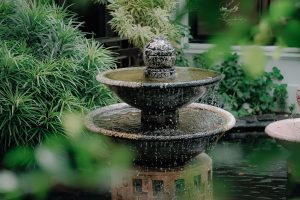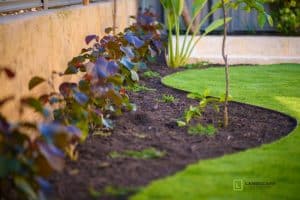Whether you want to give your old garden a fresh makeover or build a new one, knowing the basic principles of landscape design will help you put all the elements together. Your creation can be as wild and as unique as you want it to be as long as you respect some general rules. They are not here to limit you, but to guide your imagination.
Simplicity
When you look closely, some of the finest examples of landscape design Perth locals love is in line with the basic principle of simplicity. Remember that less is more! You can’t go wrong with your design if you stick to a specific theme and pick two or three colours and shapes you can repeat throughout your garden. Picture a perfectly manicured lawn lined with shrubs and a brick fence that mimics the façade of your home. Starting from there, you can think of additional elements such as a pergola or a patio adjacent to the house, a timber deck or a water feature that will create a wonderful centrepiece and the focal point of the garden. If you love flamboyant designs with overflowing slopes of tropical greenery and vivid blooms, a simple design can be the basis you can begin with before you start adding eccentric pieces.
Transition
One of the classic rules of landscape design is to opt for a gradual transition rather than sharp contrasts. Smooth lines are more pleasing to the eye as they complement natural shapes. This principle applies to everything, including colours, sizes, texture and shape of plants and other visual features of various elements of landscape design. Avoid abrupt and dramatic changes that disturb the harmony. Whether it is the size of your potted plants on the patio or the texture and shape of the foliage, make sure that transitions are smooth and natural.
Unity
Unity may sound like an abstract principle, but it actually refers to consistency. You may have millions of creative ideas and a bunch of elements you want to include in your garden, but make sure that everything fits together. Don’t get us wrong, you are allowed to have contrasts because they can look really nice, but it is important to tie everything into a whole. There has to be some consistency, be it a plant variety dispersed across the garden, a type of material that you are using throughout the landscape or a specific colour scheme.
Repetition
The easiest way to achieve unity is by repeating things, and landscapers Perth-wide keep finding creative ways to include repetitive elements into their designs. Repetition can help you mix versatile materials, contrasting shapes and colours and even seemingly mismatched pieces into a harmonious design. You only need one reoccurring element to make the most chaotic design seem perfectly planned. It can be a type of stone, a plant variety or pieces made of timber, for example. To make the garden look like a natural extension of your house, you can repeat some architectural features or use the same (or similar) materials and colours.
Proportion
If you get proportions right, you can make even the smallest garden look spacious and comfortable. But if you don’t, even a huge outdoor area can seem cluttered and poorly planned. This means that you have to consider the size of different elements in relation to each other. Consider height, width, depth and volume of things. If there is a water feature or a stone sculpture you want to place at the centre of the garden, ask yourself if it is too big or too small, is it blocking the view or is it taking up precious space you can use for something else? Perhaps it would look better in the corner? Whether you want a symmetrical or asymmetrical garden, you need to create a balance to make it appealing.
Contrast
Just like in nature, our eye is drawn to fascinating contrasts in landscape design. When you are searching for a “landscaper near me”, you’ll end up admiring crisp images brimming with colour and texture. We are naturally inclining towards those clashing but utterly satisfying mixtures of complementary colours such as red and green, orange and blue or yellow and purple. Whenever you are trying to create a contrast in shapes or colours, make sure they feel harmonious and pleasing to the eye!





